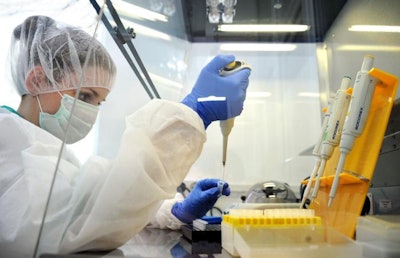
Offering greater clarity into the prevalence of antimicrobial resistance (AMR) in bacteria associated with meat from poultry and pigs, a new independent study has been welcomed by industry bodies in the United Kingdom as a clear baseline from which to identify future developments. Following a recent vote, other European Union states will be under pressure to carry out and publish similar studies.
AMR to the most clinically important drugs, as defined by the World Health Organization (WHO), was detected at some level in all the bacteria tested, according to the UK's Food Standards Agency (FSA), which has published the final report of a survey of chicken meat and pork mince conducted in 2017.
From the results, the authors of the report commented that the risk of acquiring AMR-related bacterial infections from these meats is “very low,” as long as they are handled hygienically and thoroughly cooked.
They found that the results offer a baseline against which future surveillance data can be compared to identify trends and changes in the prevalence and AMR rates of these food-related bacteria.
Overall, AMR prevalence was found to be low in enterococci and Klebsiella species, but the results identified a need to monitor extended spectrum beta-lactamase (ESBL)-producing E. coli and erythromycin-resistance in Campylobacter species.
Included in the study were samples of raw chicken (339), and pork mince (342) from retailers across the U.K., based on market share. Samples included domestically produced and imported products.
Both meats were tested for Escherichia coli (including those producing ESBL), Klebsiella species and enterococci, as well as Campylobacter species in chicken, and Salmonella species in pork. One isolate of each bacterial type was then selected at random to determine the minimum inhibitory concentration (MIC) for a range of antimicrobials. Additional testing was carried out to investigate the variation in AMR between multiple Campylobacter isolates in the same sample of chicken, for the further characterization of all Salmonella isolates, and on E. coli and Klebsiella that showed resistance to multiple antibiotic groups.
Industry positive about future AMR management
Commenting that their respective sectors have long been focusing on reducing bacterial contamination of meat and AMR, representatives from the U.K.’s poultry, pig and food industries welcomed the study with the view to its role in managing AMR in the future.
“The information will help to inform decisions by pig producers and their vets around managing pig health and will drive continued action towards greater stewardship of antibiotics,” said Georgina Crayford of the National Pig Association.
“Through more coordinated action between farmers, producers, veterinarians, academics as well as policymakers at local, regional, national and global levels, we will continue preserving the efficacy of our antibiotics and contribute to turning the tide against antimicrobial resistance,” said Richard Griffiths of the British Poultry Council.
“We believe the FSA’s new research will add to the bank of knowledge and help identify additional interventions that reduce any antimicrobial-resistant bacteria in food, while safeguarding our continued access to antibiotics that treat disease and prevent pain or suffering in animals,” said Gwyn Jones, chair of the Responsible Use of Medicines in Agriculture (RUMA) Alliance.
European Union moves on AMR
Publication of the U.K. survey was followed last week by approval of a resolution that will push all EU member states into carrying out and publishing similar studies.
Adopted with 589 votes to 12 and 36 abstentions, Members of the European Parliament (MEPs) gave their support for the “One Health” approach to AMR. Through the non-binding resolution, the MEPs agreed that the current and prudent use of antimicrobials is essential to limit the emergence of AMR in human health care, animal production and aquaculture.
“Diseases are transmitted from people to animals and vice versa, and that is why we support the holistic approach of the ‘One Health’ initiative,” said rapporteur on the action plan, Karin Kadenbach. “EU member states handle this problem in different ways, so we are asking the Commission to consider requiring EU countries to routinely collect and submit monitoring data so that we have it available at EU level and to establish indicators to measure progress in the fight against antimicrobial resistance.”
The resolution also urges the European Commission to allocate additional funding for research into non-therapeutic feed alternatives in the next financial framework, according to the European Feed Manufacturers’ Federation, FEFAC.
A recent joint report by the United Nations’ Food and Agriculture Organization (FAO), World Organisation for Animal Health (OIE) and the WHO has revealed wide variation between countries in their approach to AMR in the human, animal, plant, food safety and environmental sectors.
Among the key findings of the report was that, of the top 10 chicken-, pork- and cattle-producing countries that responded to the AMR survey, nine have at least developed a national action plan. However, only two countries — China and the U.S. — have achieved the highest level of plan for all three species.
















